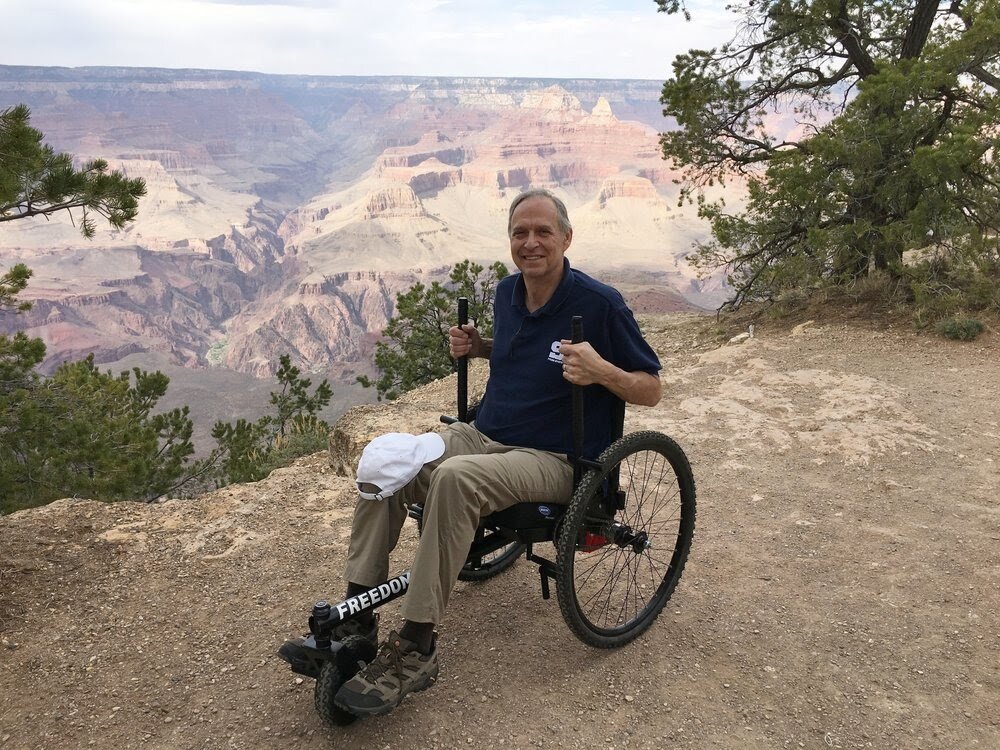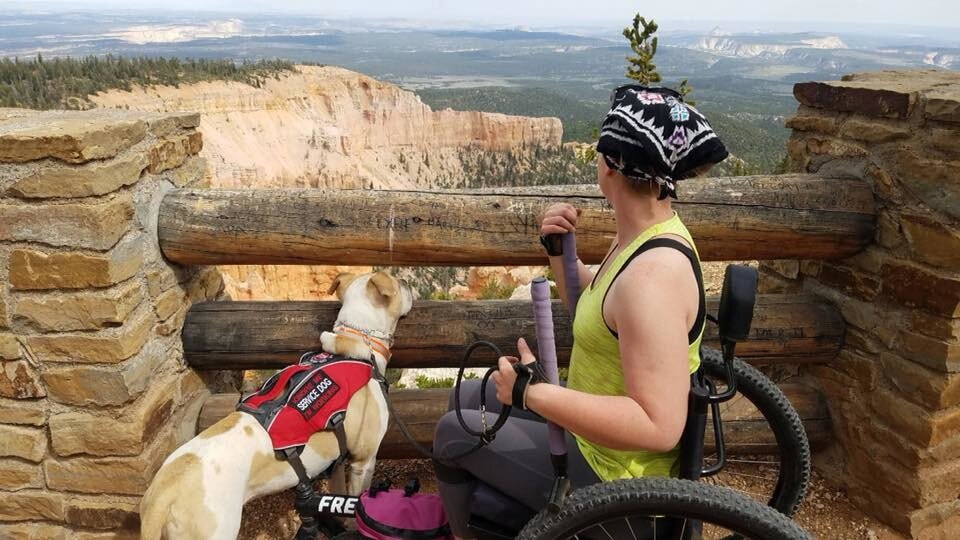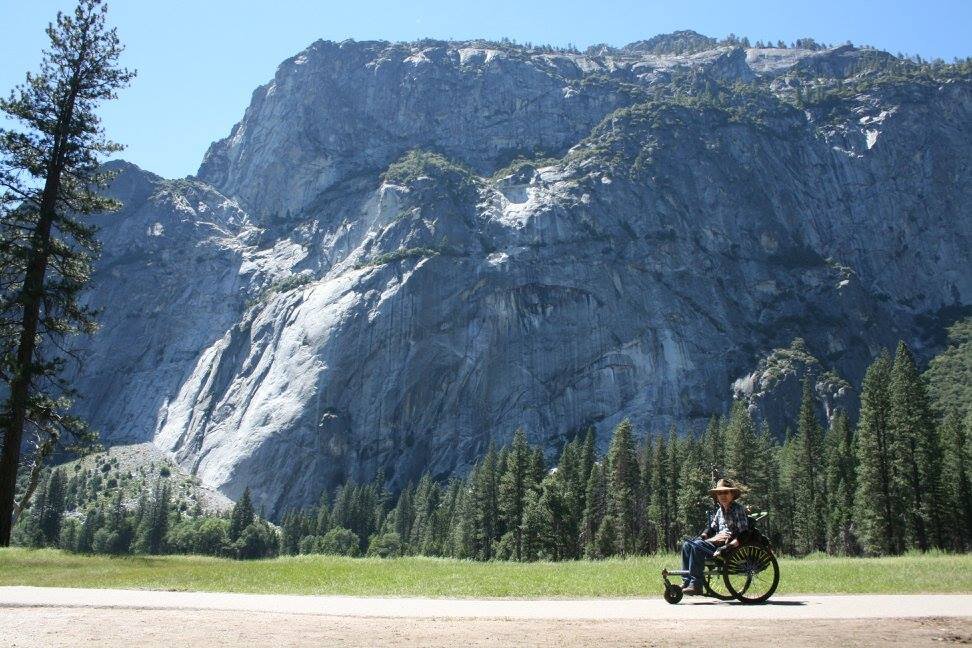By Cory Lee
The national parks of the United States are a spectacular collection of natural destinations that everyone should visit at some point. Planning an accessible national parks trip is very easy with a little bit of planning and preparation. These tips highlight some of the ways you can prepare for your next trip, from getting a free access pass to choosing trails and what to pack. National parks can truly be explored by everyone, regardless of their abilities, and America’s parks can make for some of the best trips in the world.

1. Get a National Parks Access Pass
The first step and tip for planning an accessible national parks trip is to obtain an access pass for the national parks. This will allow you to visit the park of your choosing and it covers the entry fees associated with each visit. You can visit a national park without a pass, but you will have to pay an entry fee.
An annual national parks pass typically costs around $80 for access to a range of parks all year, but people with a permanent disability qualify for a free annual pass. To receive this benefit, the person must be a permanent resident of the United States and have a permanent disability. The application process is simple, as all you need to do is fill out an application and provide documentation of both your disability and your residency. This application can be found online and submitted through the mail, online, or directly in person. Mail in or online submission does cost $10 for processing, but the access pass itself is free.
Looking to connect with other adaptive hikers and national park enthusiasts? Then join Beyond the Pavement, an online community for outdoor wheelchair adventurers! Join the Facebook Group
2. Stay up to date on rules and regulations within parks (and closings)
When planning a trip to any national park, it’s a good idea to check the park’s website and review the rules and regulations for that specific park. During this pandemic, some national parks are not fully operational with certain spaces closed, specific guidelines for social distancing, or some may even be completely closed. Checking during the planning process, as well as before leaving for your visit, will ensure you can get into the park and explore all of the spaces you’ve been dreaming to visit.
Another reason to stay up to date on the rules and regulations within the parks is because the weather can often play a role in the park’s hours and certain trails may close during storms or high water levels. Some areas of the park may also receive snow earlier than the rest of the state, and things like wildfires and flooding can restrict the park or close it completely.

3. Research accessible trails before visiting
In addition to staying up to date with guidelines, it’s important to research the accessible trails before your visit. Knowing about the trails ahead of time, and even making a list of the accessible trails, will give you the ability to make the most of your trip and the ability to make better use of your time once you’re actually in the park. Accessible trails include hiking trails, along with motor or driving trails. Consider both, as it is great to get out into nature and hike, and driving trails may offer more scenery and great photo opportunities.
When researching accessible trails, consider trail specifics, including which trails are accessible, how long is each trail in terms of mileage and elevation, and any sites or scenic stops on each trail that are worth noting. Knowing all the details ahead of time allows you to be spontaneous once you arrive and makes it easy to adjust on the day of, if specific trails are closed.
4. Check for accessible accommodations
Many national parks are easy to access for a day trip, but you can turn the trip into a weekend adventure with some accessible accommodations for the evenings. Many parks have lodges and campgrounds on site and they frequently offer accessible rooms. These cabins or campsites should be reserved ahead of time, as they can fill up during peak season. Just call the park ahead of time to inquire.
If a park that you’re looking into visiting doesn’t have accommodations on site, consider looking into wheelchair accessible cabins within the area. This will give you a chance to have your own space, social distance easily, and have the ultimate nature experience. Cabins may be a short distance away, but are a great way to explore the area and really get to retreat into nature after a great accessible hike or drive in the park.

5. Be prepared: Approach the trip like you would any backpacking or hiking trip
Lastly, it’s important to remember that you will be spending time in the wilderness, so it’s best to come prepared. Consider bringing everything a day hiker or backpacker would bring, including at least a lunch, snacks, water, and a first-aid kit. Even if you’re choosing to use car-friendly motor trails, it’s important to be prepared.
Having food in a cooler keeps it separate and ready whenever you need to stop. This also gives you the freedom to choose which trails you want to visit the day of and you can be flexible in terms of weather, restrictions, and time. Remember that there may be food rules in the wilderness, as food can attract animals. Keep your trash on your person and carry out everything you carried in. Never leave food on a trail, as this can attract wildlife, and you shouldn’t feed the animals.
With these tips, you should be well on your way to planning your next accessible national park trip. The best part about these tips is that once you have your access pass, you can visit the parks as much as you’d like. Getting your pass and taking a day trip is a great way to get started, as soon you’ll be planning an entire weekend at an accessible cabin to enjoy the whole atmosphere. Time in nature is a great retreat and the national parks are always a fun and enjoyable destination.
Looking to get off the paved path for some wheelchair hiking? The GRIT Freedom Chair was made for dirt trails, sandy beaches, grassy lawns, and much more. See the GRIT Freedom Chair in action →
About the Author: Cory Lee
Cory Lee is the award-winning accessible travel blogger behind Curb Free with Cory Lee. He hopes to inspire others to roll out of their comfort zone and see all of the beauty our world has to offer.
